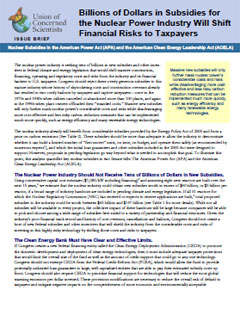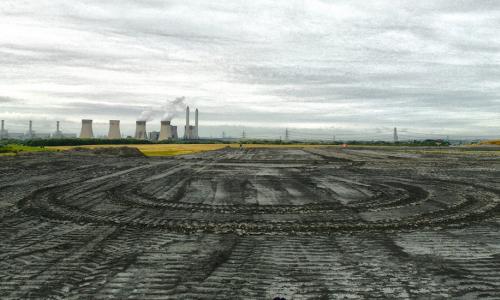The nuclear power industry is seeking tens of billions in new subsidies and other incentives in federal climate and energy legislation that would shift massive construction, financing, operating and regulatory costs and risks from the industry and its financial backers to U.S. taxpayers. Congress should reject these overly generous subsidies to this mature industry whose history of skyrocketing costs and construction overruns already has resulted in two costly bailouts by taxpayers and captive ratepayers—once in the 1970s and 1980s when utilities cancelled or abandoned more than 100 plants, and again in the 1990s when plant owners offloaded their "stranded costs."
Massive new subsidies will only further mask nuclear power's considerable costs and risks while disadvantaging more cost-effective and less risky carbon reduction measures that can be implemented much more quickly, such as energy efficiency and many renewable energy technologies.
The nuclear industry already will benefit from considerable subsidies provided by the Energy Policy Act of 2005 and from a price on carbon emissions (See Table 2). These subsidies should be more than adequate to allow the industry to demonstrate whether it can build a limited number of "first mover" units, on time, on budget, and operate them safely (as recommended by numerous experts), and which the initial loan guarantees and other subsidies included in the 2005 Act were designed to support. However, proposals in pending legislation go way beyond what is needed to accomplish that goal. To illustrate this point, this analysis quantifies key nuclear subsidies in two Senate bills: The American Power Act (APA) and the American Clean Energy Leadership Act (ACELA).




